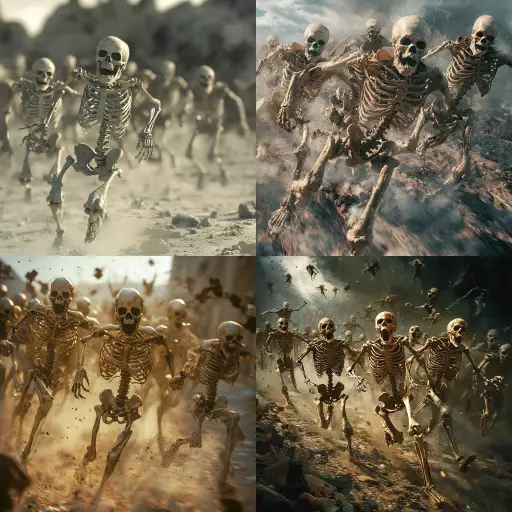Explore the Best AI Image Gallery

Pixels & Poise: AI-Generated Images and the Evolving Art World
The realm of art has always been a crucible of innovation, constantly pushing boundaries and redefining what is considered creative. In recent years, artificial intelligence (AI) has emerged as a powerful new tool, capable of generating stunningly realistic images that blur the lines between human and machine artistry. This seismic shift has sparked intense debate within the art world, raising questions about the nature of creativity, the role of the artist, and the future of artistic expression.
AI-powered image generation tools, such as DALL-E 2, Midjourney, and Stable Diffusion, leverage sophisticated algorithms to transform text prompts into captivating visual masterpieces. Users can input descriptions ranging from abstract concepts to specific scenes, and these AI systems translate these words into intricate and often surreal images.
The Potential of AI in Art
The emergence of AI-generated art presents a plethora of exciting possibilities:
- Democratization of Art Creation: AI tools empower individuals with limited artistic skills to create compelling visuals, opening up new avenues for self-expression and creative exploration.
- Conceptual Exploration: Artists can utilize AI as a collaborative partner, leveraging its capabilities to generate novel concepts and push the boundaries of their imagination.
- Enhanced Efficiency: AI can automate tedious tasks, such as image editing and rendering, freeing up artists to focus on higher-level creative endeavors.
- New Artistic Styles: AI algorithms can learn from vast datasets of existing art, enabling them to generate images in diverse styles, from classical realism to abstract expressionism.
Ethical Considerations
While the potential benefits of AI-generated art are undeniable, it is crucial to address the ethical challenges that accompany this technology:
- Copyright and Ownership: The question of who owns the copyright for AI-generated artwork remains a complex legal gray area. Is it the creator of the prompt, the developer of the AI system, or the AI itself?
- Bias and Representation: AI algorithms are trained on massive datasets, which can inadvertently perpetuate existing societal biases. This can result in the generation of images that reinforce harmful stereotypes.
- Authenticity and Deception: The ability to create hyperrealistic images raises concerns about potential misuse, such as generating deepfakes or manipulating visual evidence.
- Impact on Artists: Some argue that AI-generated art could devalue the work of human artists, leading to job displacement and a devaluation of traditional artistic skills.
Future Trends in AI-Generated Art
The field of AI-generated art is rapidly evolving. Here are some trends shaping its future:
- Increased Accessibility: As AI tools become more user-friendly and affordable, a wider range of individuals will have the opportunity to explore and experiment with this technology.
- Personalized Art Experiences: AI can be used to create personalized artwork tailored to individual preferences and tastes.
- Interactive and Immersive Art: AI-generated images can be integrated into interactive installations and immersive experiences, blurring the lines between art and technology.
- Integration with Other Creative Fields: AI will likely play an increasingly prominent role in fields such as film, music, and design, enhancing creative workflows and pushing the boundaries of artistic expression.
The intersection of AI and art is a dynamic and multifaceted landscape. While challenges remain, the potential for innovation and creative exploration is immense. As we navigate this evolving terrain, it is essential to engage in thoughtful discourse about the ethical implications of AI-generated art, ensuring that this transformative technology empowers both artists and audiences alike.











](https://images.ai-img.art/thumbnails/150/bddf3ae4a232290858389b933c866ad3be429ef2e25c23a9f4d7713ed6e44d0b.webp)




](https://images.ai-img.art/thumbnails/150/008b5d5d49667cc2e93a5f8a8adfaa545963da99c39ff0901f5296294636400d.webp)






](https://images.ai-img.art/thumbnails/150/c2c9c48b38fae37f0a457b80b084ed01ba803810fc8f488c8f610c03abc74049.webp)


](https://images.ai-img.art/thumbnails/150/4289d1230b86a96c4d556636c3167bed0ef38f850826549517e4e45db4d87bf7.webp)




](https://images.ai-img.art/thumbnails/150/f9584153b4cddd8c9fab611dc10247549b275c59bc173251e37d0935874f9deb.webp)


](https://images.ai-img.art/thumbnails/150/f67d9af3398150f2ab1bcf250717fea134275e2ca896252b54a4d9bb3719f9ac.webp)






